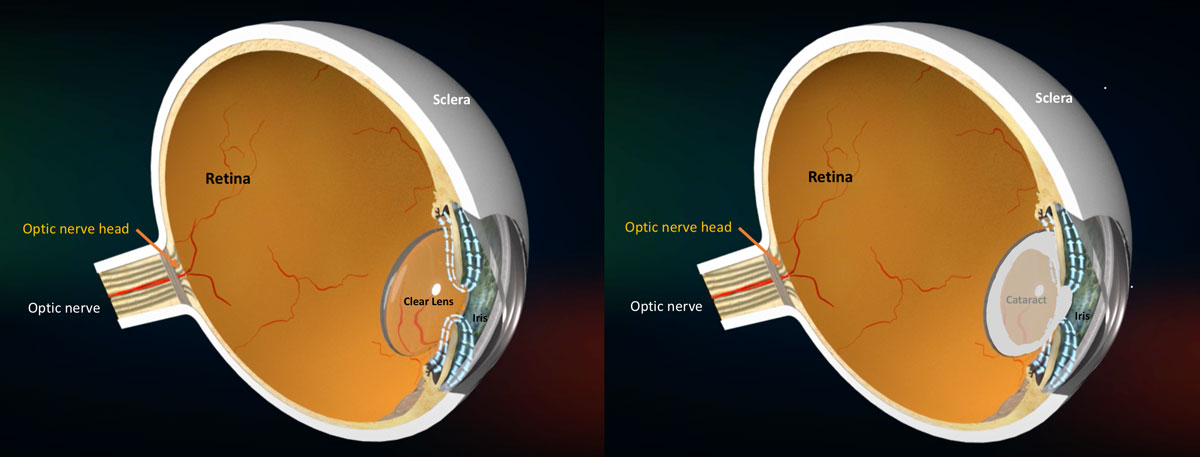Cataract is an opacity in the lens or its capsule that normally occurs with aging, and it may eventually lead to visual impairment. Glaucoma and cataract can both co-exist in the same eye. Visually impairing cataracts are treated by surgery, which will remove the opaque lens and replace it with an artificial lens. If there are no other abnormalities, vision is fully recovered after surgery.
Patients with glaucoma should undergo a comprehensive individualized assessment to determine the best surgical strategy. Advanced glaucoma or IOP poorly controlled by medical/laser treatment should be evaluated for combined glaucoma/cataract surgery.
Of note, glaucoma can occur secondary to abnormalities of the lens, such as dislocated or subluxated lens from its normal position (Phacotopic glaucoma); when lens becomes opaque and swells up (Phacomorphic glaucoma); when the cataract has become mature there can also be micro leaks from the capsule of lens and this can induce glaucoma by inflammation or lens protein deposition in trabecular meshwork (phacolytic and lens protein induced glaucoma).
The presence of a large lens in a small crowded eye, or a more anteriorly located lens may represent relevant mechanisms for primary angle closure.


